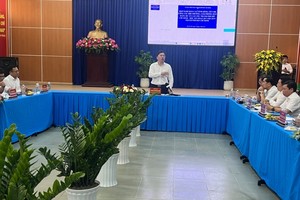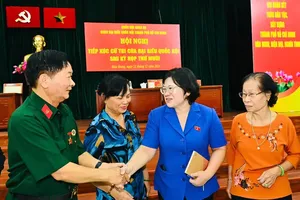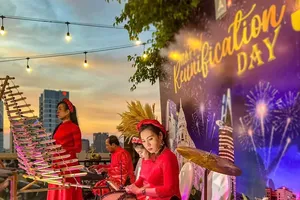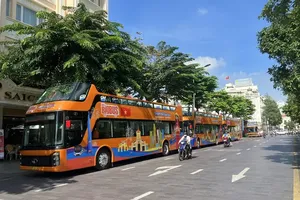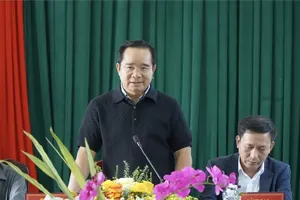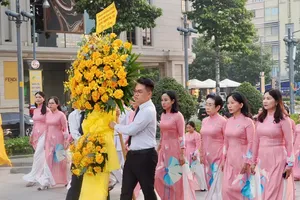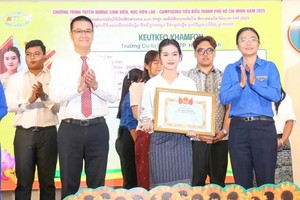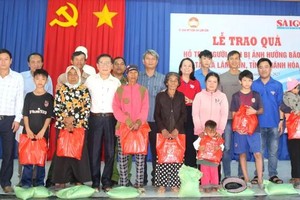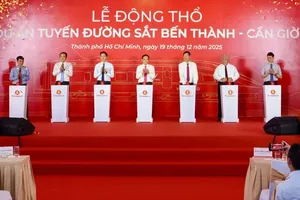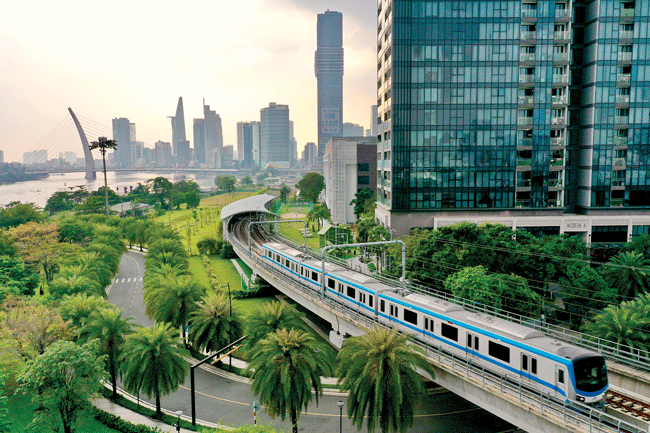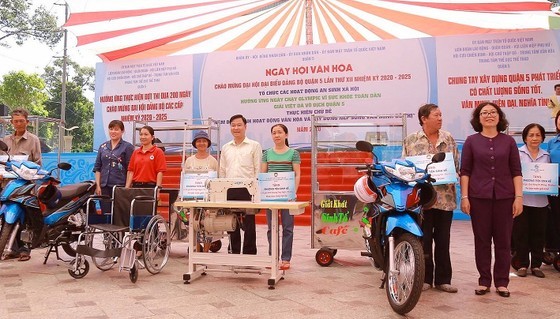 |
Administration in District 5 give support to ethnic minirity people. |
Recently, the plan to merge 6 districts of Ho Chi Minh City according to the National Assembly Standing Committee’s Resolution 35/2023 and the arrangement of district and commune-level administrative units during the period of 2023-2030 with a lot of untrue information has gone viral on social networks making some older Chinese people in District 5 worry. Realizing the impact of untrue information on people’s thinking, related departments, agencies and unions of District 5 have directly explained Ho Chi Minh City's process in implementing Resolution 35 to set people's minds at rest.
According to Head of the Propaganda Department of District 5 Chu Xuan Khoa, the Standing Committee of District 5 Party Committee determined that the work of grasping ideas among ethnic minorities in the district is an important task of the entire machinery of the state. Each unit has a different role in the task. Amongst them, the Department for Mass Mobilization regularly had meetings with reputable people in the ethnic minority community, especially in congregations and religious and belief establishments to promptly capture inhabitants’ thoughts and wishes. District administrators have taken advantage of meetings to propagate the government’s guidelines, policies, laws and political tasks.
The Propaganda and Education Committee under the HCMC Party Committee meets monthly with communicators in districts to understand the wishes of people in ethnic minority groups.
With about 37 percent of the population being ethnic minorities, District 11 has also made efforts to grasp ethnic minority people’s expectations to stabilize their thoughts. Accordingly, the district focuses on bringing official information to ethnic minorities by transcribing information into ethnic languages, ensuring people can access it.
Similarly, District 6 is home to 62,000 ethnic minorities including more than 60,700 Chinese people. Head of the Propaganda and Education Department in District 6 Nguyen Quoc Duong affirmed that with the explosion of social networks, in addition to rapid propaganda work through online channels, localities focus on promoting the role of reputable people in capturing public opinion. Reputable elderly people also participate in propaganda, advocacy and reconciliation right from the grassroots to prevent mass complaints.
According to district leaders, to create consensus, in addition to propaganda and advocacy, administrations in localities also take heed of creating favorable conditions for the business community including many Chinese businesses to grow. Moreover, governments in the district also focus on promoting the learning movement amongst Chinese children; and giving livelihood support and social security care.
For instance, resident Huynh Huu's household in District 6’s Ward 8 was recognized as escaping poverty. District 6 administration has supported Ms. Huynh Huu's family by giving loans, helping repair her dilapidated house, granting health insurance cards, and giving scholarships to her son Kien Xuong. Thanks to the local encouragement and support, the boy Kien Xuong graduated from college and has a stable job to support his family.
According to the Ho Chi Minh City Committee for Ethnic Minority Affairs, recently, the southern metropolis has implemented many specific ethnic policies based on applying central policies and the actual situation of ethnic minorities in the city. That is, policies to support study costs for graduate students and graduate students from ethnic minorities plus ethnic minority students from poor and near-poor households. Cham and Khmer ethnic students are exempt from tuition fees. Ethnic minorities in difficult circumstances are eligible for loans with preferential interest rates for sustainable poverty reduction among ethnic minorities.
In addition, localities also take care of cultural development, preserving and promoting the national cultural identity of ethnic minorities. Specifically, the government and people of District 5 together promote the cultural heritage, history, and traditional arts of the Chinese people such as lion dance, calligraphy, ink painting, and ceremonies like the Lantern Festival, and Lunar New Year Festival.
